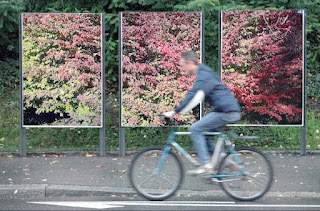Look at all the Smarty Plants
There is an expensive word we need to define: anthropomorphizing. That means giving human characteristics to non-humans, such as those talking rodents in cartoons or animatronic bears in pizzarias. It seems to be human nature to give human traits to things.
It is similar to reification, which is a logical fallacy. F'rinstance, "Science insists..." No. "Evolution gave this creature..." No, again. Those are concepts that are given human characteristics. The part about reification is a bonus for you, now look at how the smart plants know that autumn has arrived here!
 |
| Burning Bush changing colors, Unsplash / Cowboy Bob Sorensen, modified at PhotoFunia |
Wesley Smith has warned more than once against anthropomorphizing plants and ascribing intelligence — even personhood — to flowers and trees. But like responsive robots, plants can have smarts programmed into them. “So sure, investigate how plants interact with their environment,” he advises. “But use proper, non-personal language. They are plants.” Let’s do that, and look at some of the superior programming that makes plants look smart because their design is smart.. . .Intelligent agents can exhibit behavior, but not all behaving entities are intelligent agents. For example, the Curiosity rover on Mars might look to an alien visitor like a sentient being acting autonomously. Its behavior, however, has been programmed into it. Some of that behavior runs from embedded instructions in its software; some of its actions are controlled by sentient beings millions of miles away. It would be fallacious to call Curiosity “intelligent” or a “person.”
You can get to the root of the article by heading on over to "The Superior Programming that Makes Plants Look Smart. Looking out the window at my wife's car — well, it's my car now — it sure looks lonely without my Subaru next to it... no, it's a car.